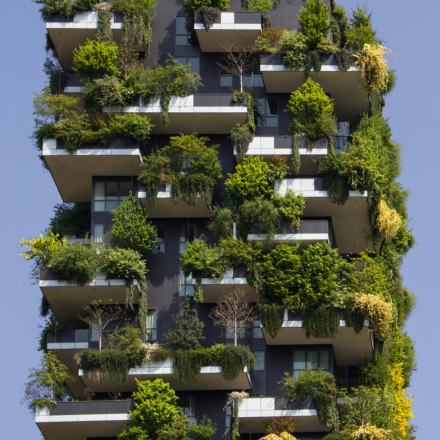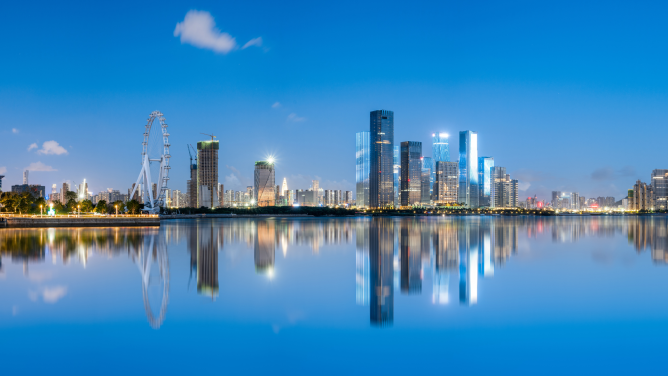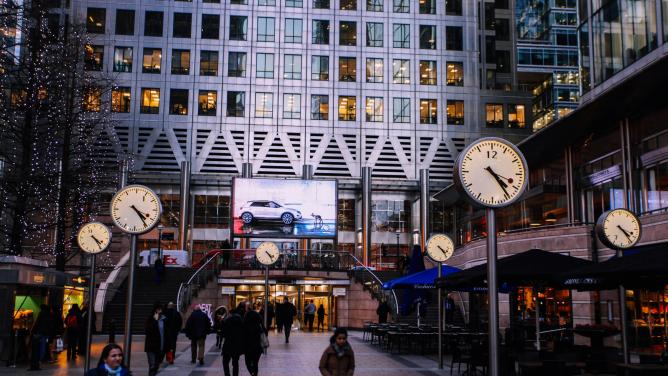With land artificialization, rampant urbanization and an increase in agricultural and forestry production, natural habitats are being cut up into pieces and shrinking in size. The victims? Flora and fauna. “Batrachia live, feed and reproduce in different places. Once you fragment their territory, their movements are hindered, restricting the gene pool from mixing and causing a collapse in population levels,” explains Pierre Grasset, technical manager at Equo Vivo, a VINCI Construction brand specializing in environmental development projects. Without a link between these different spaces, without bridges between these areas, there is no salvation for biodiversity.
For this reason, the need to build ecological continuity has emerged. What this implies is developing a network made up of both these reservoirs of biodiversity and corridors promoting movement between the different natural spaces necessary for the life cycle (food, habitat, reproduction) of animal and plant species. These continuities come in different frameworks, each adapting to the local context and each with different aims. For example, blue-green infrastructure (BGI) protect and restore land and water spaces, brown infrastructure preserve soils and dark infrastructure fight against light pollution.
Corridors to repair but also stimulate biodiversity
While the latter two types of infrastructure are still in their infancy, BGI first came to light in the 1980s. It has now established itself as a major tool for local planning, which first came about during the Grenelle de l’Environnement, an open multi-party debate which first took place in France in 2007, ensuring that BGI must now be identified in all town planning projects, whatever their scale. “Thirty years ago, the environment and biodiversity were barely taken into consideration on construction projects; these days they are considered a priority,” explains Grasset. “A construction site can only begin once its environmental impact has been assessed, and avoidance, reduction and compensation measures and natural corridors have been proposed, as well as measures to restore or enhance ecological continuities.” One prime example is the construction of 130 wildlife crossings along the 24-kilometer stretch of motorway which bypasses Strasbourg – that’s the equivalent of one crossing every 200 meters. And if preserving what already exists and reducing the environmental impact wasn’t enough, the project also strived to improve biodiversity by enhancing blue infrastructure. As some watercourses had been canalized in the past, they were then dug up, their meanders redrawn, and extension zones arranged in a way to reduce the level of rainwater to combat flooding.
In Medellín, Colombia, renaturalisation and rewilding has also taken root. Since 2016, thirty urban roads have been transformed into “green corridors” with trees and flowers, connected to green spaces, parks and private gardens. This long-term project has won awards, such as the C40 Cities Bloomberg Philanthropies Award. By extending into the city centers, ecological continuities not only benefit biodiversity, but those living in the city benefit too. Lakefront Park in Chicago is another iconic, founding initiative of nature reconquering space in cities. First built at the end of the 19th century, this green corridor has continued to grow, now measuring 42 kilometers long and 1.5 kilometers wide. It is made up of a succession of public parks linked to each other via planted promenades, cycle paths, beaches and even marinas, and constitutes a life-saving refuge zone between the coastline and urbanization. Not only does it help protect flora and fauna, but humans too against the risk of erosion and submersion. The Last Four Miles project is looking to complete the lakefront park system, by creating 200 hectares of additional parks and beaches, featuring new islands and artificial beaches, restoring sand dunes and building pedestrian footbridges.
Abandoned urban space as a promising resource
Furthermore, at a time when air pollution and climate change are putting urban density to the test, blue-green infrastructure help cool down cities, suck up CO2, absorb rainwater to avoid runoff and flooding, and provide a mental health solution for stressed urbanites. Take the city of Madrid, where the floodgates along the Manzanares River have been reopened to create a wildlife corridor popular with residents. To ensure that this coexistence between the urban and natural worlds prosper in urban and peri-urban areas, industrial, commercial and logistical wastelands have been reconverted, providing immense opportunities for restoring biodiversity. In the Nord department in France, blue-green infrastructure has been installed along the old mining region. Wetlands, resurgent forests, green landscapes and hiking and cycling routes have replaced slag heaps and old railway lines. Other promising urban sites include open-air car parks and parking spaces. In Paris, 135,000 parking spaces will disappear by 2026, a large majority of which will be replaced with flower beds and trees, or wide, shallow swales or vegetated ditches which temporarily collect runoff water. It’s a way of strengthening the French capital’s urban resilience at a time when temperatures are rising and heatwaves and heavy downpours are on the increase. “Nature can also be integrated into buildings (…) with green facades or roofs. The main thing is that all these natural spaces are connected to each other, ensuring that natural species can continue their life cycle,” explains Vanessa Rauel, head of biodiversity and planning studies at Cerema, in an interview with Construction 21.
“With the development of ‘net-zero artificialization,’ wastelands are emerging as a promising resource for developing ecological continuities, especially since redeveloping them doesn’t involve damaging the environment further, instead the land is restored and enhanced,” explains Grasset. With the Revilo method developed by David Ribojad, VINCI Construction is acting on four levers to make urban wastelands central to the fight against heat islands, as the technical manager explains: “Rainwater is an essential source for vegetation to grow and is managed on the scale of the plot. More plants are planted, including a variety of species across different heights, including trees to enhance evapotranspiration. Finally, in addition lighter-colored surfaces to promote the albedo effect, a technosol is applied.” The latter is a soil that showcases the circular economy, reusing and enriching land moved from construction sites. With the emergence of brown infrastructure, this long-forgotten solution is now being applied more frequently, in an effort to preserve soils which is central to helping microfauna move from one place to another, and is the life support system for all living things. One initiative that stands out is Cerema’s MUSE project, which seeks in to integrate multifunctionality in town planning rules. “The wheels are in motion, but soil fertility indicators are emerging and certain procedures are being established, like those to prevent soil compaction, soil stripping or soil from being moved about too much during the construction phase,” explains Grasset.
A rise in infrastructure
A new type of infrstructure is also emerging: dark infrastructure is designed to fight against the harmful effects of light pollution on numerous animal species. These effects include being dazzled or blinded by artificial lights, birds burning their wings or simply dying of exhaustion from trying to flee it or being forced to remain confined to a restricted territory. Various measures are being introduced, such as turning off lights in the dead of night, to reducing the number of lights and reducing light bulb intensity or orientation. To this rainbow of infrastructure, surely a white, or “silent” continuity could be added, raising the question: does scattering out not imply a loss of efficiency? “Collectively, we have become accustomed to working in silos, whereas to carry out sustainable development policies, we must bring together all the ecological networks and cross-reference the issues,” warns Rauel. This can easily be overcome, as Grasset points out: “Each of the networks have targeted actions to a specific problem, but nothing prevents us from adding them together and making them interact together.”
It just goes to show how important it is to forge connections.



